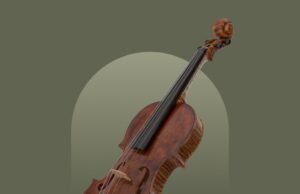John Dilworth
KLOTZ, Matthias (I) Born 1653, died 1743 Mittenwald Germany. Son of Urban Klotz, a tailor. First maker of this extended and highly important family of violin makers. From 1672-1678 he is recorded as a journeyman worker in the workshop of the Bavarian- born lute maker Pietro Railich in Padua. Railich is known for several surviving lutes but not thought to have been a violin maker, and it is not certain how Klotz arrived at his own style of work. By 1686 he was established as a ‘lauternmacher’ in Gries, a part of Mittenwald. He later moved to Oberen Markt and to Herrengasse in the town. Three sons from two marriages became violin makers: Georg (I), Sebastian (I) and Johan Carl, and secured the long association of Mittenwald with the German violin craft. He also taught several others who were engaged in his workshop at various times: Andreas and Johannes Jais, Martin Dieffenbrunner (Tieffenbrunner), Johannes Daenzl (Tentzel), Nikolaus Woernle, Michael Schaendl and Martin Baader. A statue of Matthias was erected in front of the church of St Peter and Paul in 1890, and there is a small 20th century tablet and fresco in the town. His earliest authenticated work is a viola dated 1712 but his instruments are relatively rare. Given such a well-populated workshop, it is thought that the majority of Klotz’ work went unlabelled, and at least some effort was put into other forms of instruments. The earliest known violin is quite Italianate, but later instruments show the Stainer influence in what was to become a more characteristic and typically German style, with fairly high arching, deep and narrow edge fluting, and very curved soundholes. A violin of 1714 is kept in the Mittenwald Violin Making School. Two other examples are dated 1725 and 1727 and there is a bass viol of 1715. Mathias Kloz Lauternmacher / in Mittenwaldt Anno 1714 Mathias Kloz Lauternmacher / in Mittenvvaldt Anno 1725 [Layer, Baader, Senn]
George Hart
Is reported to have been a pupil of Stainer; born about 1640. The work is good but the varnish poor. Much of the wood that he used was cut at the wrong season, and is consequently worm-eaten. It is an error to give Matthias the foremost place in this large family of Violin makers—his son Sebastian was his superior.
Cecie Stainer
b. about 1650. Worked in Mittenwald till about 1735. Is said to have learnt his trade from Stainer himself; in his instruments he closely followed the Stainer pattern. He travelled in Italy, visiting Florence and Cremona, before he finally started, about 1683, his great work in Mittenwald. The small town was then in a state of great poverty, but Mathias, taking advantage of the famed pine woods around, in which he found just the material he required, employed numbers of workmen to make cheap violins, which were afterwards hawked round from house to house and sold at extraordinarily low prices. As a rule each workman made one and only one of the required parts of the instrument, other workmen were employed in putting the parts together into one whole.
Mittenwald soon rivalled Markneukirchen in Saxony and Mirecourt in the Vosges in this industry, and the fortune of the town was made. The tone of the instruments is not bad, but the yellow-brown varnish is of poor quality and the sound-holes rather small. In a viol, of which the neck and head had been changed so as to turn it into a viola, was the label : ” Mathias Klotz Lautenmacher in Mittenwald, anno 17—.” In the Paris Conservatoire Collection is a viola d’amore with seven strings and fifteen sympathetic strings, dated Mittenwald, 1732. His three sons, George. Sebastian, and Joseph, were all makers.
Willibald Leo Lütgendorff
Der eigentliche Gründer der Geigenindustrie Mittenwalds. Er war der
älteste Sohn von Urban Klotz und durfte in Füssen oder Vils gelernt haben
und hat vielleicht auch bei Stainer selbst gearbeitet; auch ist nicht ausgeschlossen,
dass er auf der Wanderschaft bis nach Italien gekommen ist; seine Arbeit steht
jedoch nur unter dem Einfluss Stainer’s. Die Geschichte seiner Lehrjahre wird
gewöhnlich sehr romantisch dargestellt. Da durch die Gebirgspässe bei Mittenwald
eine der wichtigsten Heerstrassen aus der Levante, Italien und Tyrol nach
Augsburg führte und die Mittenwalder Rollfuhrleute daher leicht Beziehungen
bis weit nach Italien hinein haben konnten, soll Mathias schon als zehnjähriger
Knabe von einem solchen Fuhrmann nach Cremona zu Nic. Amati gebracht
worden sein. Nach zwanzigjähriger Abwesenheit sei er dann heimgekehrt, wo
er seinen Geburtsort in grossem Aufschwung fand. Die venezianischen Kaufleute
hatten nämlich ihren Markt von Bozen nach Mittenwald verlegt. Dieser
Umstand durfte ihn thatsächlich zum Bleiben veranlasst haben. Er fand jetzt
in Mittenwald einen geeigneten Boden für seine Kunst; an gutem Holz war kein
Mangel, und Absatzgelegenheit war sowohl nach dem Süden wie nach dem
Norden reichlich vorhanden. Er zog sich Schüler und Gehilfen heran und brachte
es zu Ansehen und Wohlstand, hatte ein Haus in der Judengasse und war zwei Mal
verheirathet. Es ist jedenfalls den fremden Kaufleuten zuzuschreiben, die immer
nur Geigen von dem damals schon hochgeschätzten Stainer haben wollten, wenn
er, um seine Arbeiten leichter an den Mann zu bringen, wie man behauptet,
auch Zettel mit Stainer’s Namen in seine Geigen klebte. In Bezug auf die
Durchführung sind seine Arbeiten sehr lobenswerth; auch der Ton ist recht gut;
dagegen ist sein Holz nicht immer schön und dem Wurmfrass ausgesetzt. Der
Lack ist auf dunklem Grunde aufgetragen und hat einen gelblichen Schimmer,
ist im Allgemeinen aber dürftig. Übrigens ist es ein Irrthum, ihn für den besten Meister der Familie zu halten, da er z. B. von seinem Sohne Sebastian
weit übertroffen wurde. Der ausgedehnte Handel ging später auf die Neuner
über. Schon um 1730 traten Johann und Mathias Neuner in den Vordergrund und verstanden es, allmählich den ganzen Mittenwalder Geigenhandel zu monopolisiren.
— Ein Alto von schönem Holz und hübscher Arbeit besass die Sammlung Snoeck (No. 576, jetzt in Berlin).
